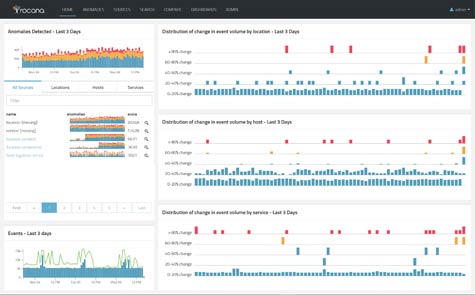It’s currently clear that machine learning algorithms will not only imbue applications with all kinds of never –before-imagined capabilities, but will also affect the way IT itself is managed. IT is based on machines, so the first most logical place to apply machine learning algorithms is the management of IT itself.
To achieve that goal, Rocana created Rocana Ops, the latest version of which released today, which adds support for unified anomaly detection, root cause analysis and data visualization capabilities. Rocana CEO Omer Trajman says version 1.3 of Rocana Ops is designed to enable IT organizations to do more than simply monitor IT infrastructure. The goal now is to make it possible for IT organizations to collect machine data in a way that alerts them to anomalies that are going to have a real-world impact on the performance and availability of applications.
To make that possible, Trajman says, Rocana Ops is designed to simultaneously analyze hundreds of thousands of events spanning multiple metrics, including event volume, CPU, disk and RAM utilization as well as customize metrics that internal IT organizations can define on their own. In fact, Trajman says Rocana Ops is the first IT management application designed to provide visibility of IT data right down to the individual log line.
Other new features in version 1.3 for Rocana Ops include a Weighted Analytic Risk Notifications (W.A.R.N.) module that identifies potential issues by tracking the history of anomalies by object to create a risk score for a particular IT service. It also adds support for the Hadoop distribution from Hortonworks alongside existing support for the Cloudera distribution of Hadoop.
Over time, Trajman says, IT organizations should expect to see machine learning algorithms become a more standard part of the IT environment. The simple fact of the matter, says Trajman, is that IT has become too complex to manage without making use of advanced machine learning algorithms.
That doesn’t mean, however, that IT professionals will one day be replaced by artificial intelligence (AI) systems. But it does mean the days when IT professionals spend more time trying to figure out what is happening in their environment versus actually fixing a particular problem are coming to a close.




